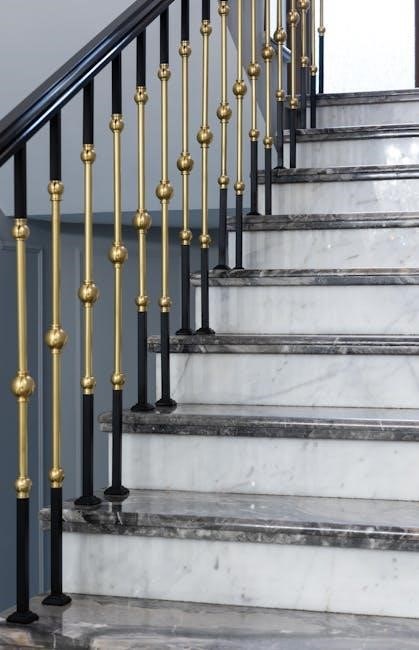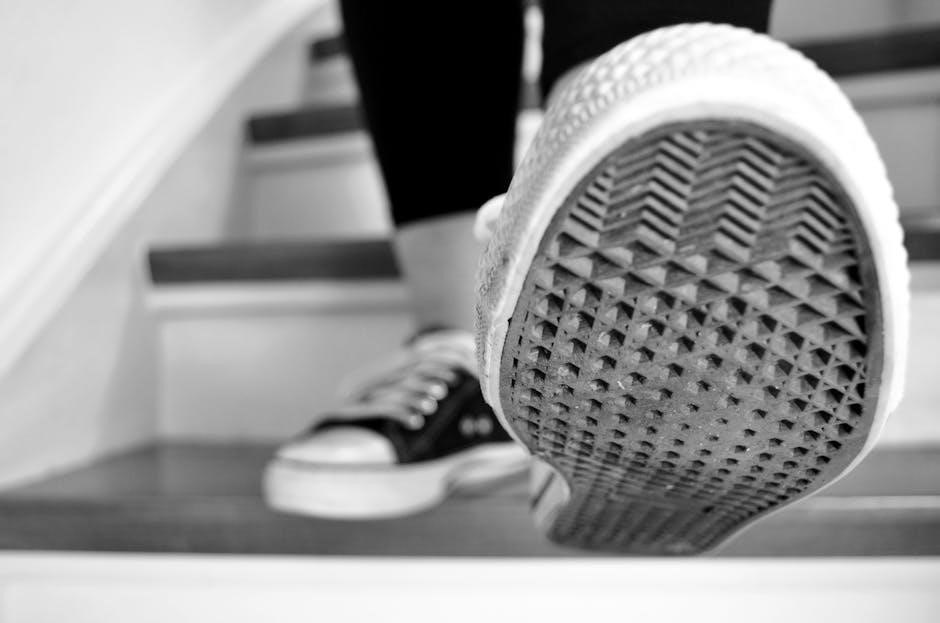How to Sew Curtains ― Step by Step PDF
Discover how to sew curtains with a step-by-step PDF guide. Learn measuring techniques, fabric calculation, and sewing methods. Create custom curtains with professional results using detailed instructions and easy-to-follow patterns. Perfect for beginners and experienced sewers alike.
Welcome to the world of sewing curtains! Sewing your own curtains is a rewarding DIY project that allows you to customize your home decor with precision and style. Whether you’re a beginner or an experienced sewer, creating curtains offers a great opportunity to enhance your sewing skills while achieving professional-looking results. This guide will walk you through the process step by step, ensuring you understand everything from measuring your windows to sewing the final stitches.

Sewing curtains is more than just stitching fabric together; it involves understanding fabric types, measuring accurately, and choosing the right techniques for a polished finish. With the right tools and a little patience, you can create beautiful, functional curtains that perfectly match your home’s aesthetic. This introduction sets the stage for your curtain-sewing journey, providing the foundational knowledge you need to get started with confidence.

By the end of this guide, you’ll be equipped with the skills to create custom curtains that reflect your personal style and suit your space perfectly. Let’s begin this creative adventure and transform your windows into stunning focal points!
Measuring Your Window and Calculating Fabric Needs
Measuring your window accurately is the first and most crucial step in sewing curtains. Start by determining the width and drop (length) of your window. Add extra width for folds or gathers, typically 2.5 times the window width for a full, elegant look. Measure the drop from the top of the window to the desired curtain length, considering whether you want the curtains to fall above the sill, below, or to the floor.

Next, calculate the fabric quantity. Use the total width (window width plus extra for folds) and the drop measurement to determine how much fabric you need. Always consider the fabric’s pattern repeat to ensure matching designs across panels. Add 10-15% extra fabric for seam allowances and mistakes. Tools like a rotary cutter and quilt ruler can help achieve precise cuts for cleaner lines.
Preshrink washable fabrics before cutting to prevent shrinkage after sewing. This step ensures your curtains maintain their shape and size over time; Accurate measuring and fabric calculation are essential for professional-looking results, so take your time and double-check your numbers before cutting.
Gathering Materials and Tools for Curtain Sewing
To begin sewing curtains, gather all necessary materials and tools to ensure a smooth process. Start with your pre-washed fabric, chosen for its texture, durability, and decorative appeal. You’ll need a sewing machine, rotary cutter, and quilt ruler for precise fabric cutting. Essential tools include sharp scissors, pins, measuring tape, and a seam ripper for corrections. A iron and ironing board are crucial for pressing seams and hems. Select matching thread to blend with your fabric, and consider lining or interfacing for added stability.
Additional materials depend on your curtain style. For rod-pocket curtains, you’ll need a drapery rod and rings. If sewing casings, prepare ribbon or twill tape. Decorative elements like ribbons or tassels can add a personal touch. Optional tools include a serger for finishing seams and sewing patterns for advanced designs. Organize all materials in a dedicated workspace to stay efficient. Having everything ready ensures you can focus on sewing without interruptions, leading to professional-looking curtains tailored to your home.
Preparing the Fabric for Cutting

Preparing your fabric is crucial for achieving professional-looking curtains. Start by pre-shrinking the fabric according to its care instructions to prevent shrinkage after sewing. Wash and dry it as you would normally, especially if it’s made of natural fibers like cotton or linen, to ensure it retains its size.
Next, iron the fabric to remove any wrinkles, ensuring it lies flat and smooth. This step is essential for accurate cutting and a polished finish. Lay the fabric on a large, flat surface, such as a table or cutting mat, to facilitate precise cutting.
Use a rotary cutter and ruler for straight, clean cuts. Align patterns or match selvages to maintain consistency, especially if the fabric has a specific design. Always cut with the grain of the fabric to prevent distortion and ensure proper drape.
Identify the right and wrong sides of the fabric and ensure they face correctly, particularly when cutting multiple layers. Consider adding stabilizing materials like interfacing or lining for structure, especially for heavier curtains or to enhance light-blocking properties.
Finally, double-check your measurements after cutting to ensure accuracy. This thorough preparation will set the stage for sewing curtains that are both functional and visually appealing.
Creating the Curtain Casing
Creating the curtain casing is a critical step that allows the curtain rod to slide through effortlessly. Start by folding the top edge of the fabric over twice to form a channel, ensuring the fold is wide enough to accommodate the curtain rod. Pin the fold in place to maintain consistency across the panel.
Sew along the folded edge using a straight stitch, leaving a small opening if you plan to insert drapery weights or lining. For a rod pocket casing, fold the fabric to the desired width and sew in place. For pinch pleat or grommet styles, mark the positions and sew or attach grommets accordingly.

Use a seam ripper to carefully open any seams if adjustments are needed. Ensure the casing is evenly spaced and aligned for a professional finish. This step ensures the curtain hangs smoothly and functions properly when installed.

Hemming the Curtain Edges
Hemming the curtain edges is essential for a polished and durable finish. Start by folding the raw edges of the fabric inward by about 1/4 inch, then another 1/4 inch, and press with an iron to create a sharp crease. This double fold prevents fraying and ensures a clean look.
Sew along the folded edge using a straight stitch, maintaining a consistent seam allowance. For a professional touch, fold the hem up by the desired length, press, and sew in place. Use a rotary cutter and ruler for precise cuts, ensuring straight lines and even hems.
For heavier fabrics, consider a wider hem, while lighter materials may suit a narrower hem. Optionally, add decorative stitching or ribbon for embellishment. Proper hemming ensures the curtains hang evenly and last longer.
Sewing Multiple Curtain Panels Together
When sewing multiple curtain panels together, start by aligning the edges of the fabric pieces carefully. Use pins to secure the panels in place, ensuring the patterns or repeats in the fabric match perfectly. This step is crucial for a seamless and professional-looking finish.
Sew the panels together using a straight stitch, maintaining a consistent seam allowance. Press the seams flat with an iron to ensure a crisp finish. For added durability, consider sewing a top stitch along the seam. If using a patterned fabric, double-check that the design aligns across all panels for a cohesive appearance. This method ensures your curtains hang evenly and look polished. Proper alignment and precise sewing are key to achieving professional results. Keep the fabric smooth and taut during sewing to avoid puckering or distortion.
Adding a Decorative Top Stitch or Ribbon

Adding a decorative top stitch or ribbon is a great way to enhance the aesthetic of your curtains. Start by selecting a contrasting thread color or a ribbon that complements the fabric. Use a sewing machine to create a top stitch along the top edge of the curtain, ensuring the stitch aligns evenly with the hem. For a ribbon, measure and cut the desired length, then pin it along the top edge, folding the ends under for a clean finish. Sew the ribbon in place using a straight stitch, keeping the fabric smooth to avoid puckering.
This decorative touch adds a professional and personalized flair to your curtains. Choose a ribbon that matches or contrasts with the fabric for a unique look. Ensure the stitching or ribbon is secure and evenly spaced for a polished appearance. This step allows you to customize your curtains, making them stand out in any room. By following these simple steps, you can add a beautiful finishing touch to your handmade curtains.
Attaching Curtain Hooks or Rings

Attaching curtain hooks or rings is the final step before hanging your curtains. Start by determining the spacing for the hooks or rings, ensuring even distribution across the curtain’s top edge. Measure and mark the positions carefully, using a seam gauge for accuracy. For hooks, sew them securely to the curtain’s casing, making sure they are aligned and spaced evenly. For rings, sew them directly to the top edge of the curtain, ensuring they are evenly spaced and aligned with the curtain’s width;
When sewing, use a straight stitch or a heavy-duty stitch for durability. Ensure the hooks or rings are tightly secured to withstand the curtain’s weight. If using hooks, attach them to the casing seam, while rings are sewn directly to the fabric. Properly spaced hooks or rings ensure the curtain hangs smoothly and evenly. Once attached, test the curtain on the rod to ensure the hooks or rings glide smoothly. This step completes your curtain project, readying it for hanging and enjoying in your home.
Hanging and Adjusting the Curtains
Hanging your newly sewn curtains is the final step to complete your project. Start by ensuring your curtain rod is securely installed and level. Slide the curtain hooks or rings into the casing or attach them to the top edge of the curtain, depending on the style you chose. Gently pull the curtain onto the rod, making sure it is centered and the fabric lies smoothly. Adjust the hooks or rings as needed to ensure even distribution of the fabric and a balanced appearance.
Once hung, check the curtain’s alignment and smooth out any wrinkles or creases. If necessary, fluff the fabric to restore its natural drape. Ensure the curtain hangs evenly and functions properly, such as opening and closing smoothly if it’s a functional drapery. Make any final adjustments to the placement of hooks or rings for optimal fit. Properly hanging your curtains ensures they look professional and function as intended. This step completes your DIY curtain project, leaving you with beautiful, custom-made window treatments for your home.
Troubleshooting Common Sewing Mistakes
When sewing curtains, common mistakes can arise, but they are easily fixable with the right techniques. One frequent issue is uneven fabric alignment, which can lead to a crooked curtain. To resolve this, ensure your fabric is pre-shrunk and cut on a flat surface. Use a rotary cutter and ruler for precise cuts, and double-check measurements before sewing.
Another common error is puckering at the seams, often caused by incorrect tension on the sewing machine. Adjust the tension settings and use a walking foot if necessary. For hems that are not straight, press the fabric thoroughly and use a seam guide to maintain a consistent fold. If the curtain casing is too tight, simply adjust the hook placement or add more fabric to the casing.
Lastly, if the curtain does not hang evenly, check the placement of hooks or rings and ensure the curtain rod is level. By addressing these issues promptly, you can achieve professional-looking results. Troubleshooting these common mistakes ensures your curtains function and look their best, completing your sewing project successfully.
Downloading Free Curtain Sewing Patterns and Guides
Accessing free curtain sewing patterns and guides is easier than ever, with numerous online resources available. Websites like Fat Quarter Shop offer a wide selection of free PDF patterns, perfect for beginners and experienced sewers alike. These guides provide detailed step-by-step instructions, measurements, and fabric requirements to help you create custom curtains tailored to your space.
In addition to patterns, many platforms offer tutorials and video courses. For instance, the New York Sewing Center and Sew Yours provide comprehensive guides on curtain making, including tips on fabric selection, hemming, and adding decorative elements. Some resources even include project sheets and customizable templates to suit your specific needs.
Downloading these resources is straightforward, with most websites offering direct PDF downloads. If you encounter any issues, many sites provide troubleshooting guides or customer support. With these free resources, you can explore creative designs, learn new techniques, and achieve professional-looking results without spending a fortune. Start your curtain-sewing project today with the help of these accessible and detailed guides!
